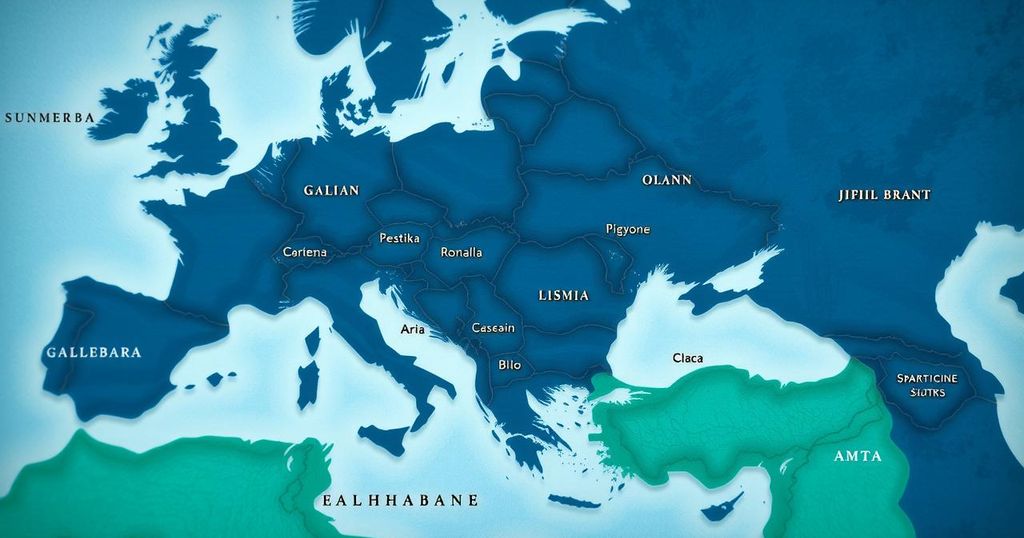The Yemeni Civil War: From Internal Conflict to Regional Crisis

The Yemeni Civil War, ongoing since 2014, began with the Houthi takeover of Sanaa amid instability from the Arab Spring. Saudi Arabia and UAE intervened, leading to a humanitarian crisis. The Houthi rebels gained control, and in 2023 initiated attacks on Israel and shipping routes, complicating regional dynamics.
The Yemeni Civil War, which commenced in 2014, has been a devastating conflict largely stemming from the capture of the capital, Sanaa, by Houthi rebel forces, amid a backdrop of instability from the preceding Arab Spring uprising. The situation escalated significantly with the intervention of Saudi Arabia and the United Arab Emirates, leading Yemen to the brink of starvation and causing the worst cholera outbreak in recorded history. By 2020, the Houthis appeared to gain the upper hand as foreign military forces began withdrawing. In 2023, however, the Houthis expanded their military ambitions by attacking Israel and targeting maritime vessels in the Red Sea as tensions flared in the region due to the Israel-Hamas conflict.
The roots of the conflict trace back to the leadership of Ali Abdullah Saleh, who, after unifying Yemen in the late 1980s, struggled to appease an increasingly dissatisfied Zaydī Shiʿi population. The Houthi movement emerged in the early 2000s in response to Saleh’s oppressive governance. Although he held power for over three decades, the entrenched divisions among the populace became apparent following his ousting during the Arab Spring in 2012.
The Arab Spring inspired widespread protests throughout Yemen in 2011, and in January of that year, demonstrators demanded Saleh’s resignation. Well-organized by various opposition groups, including the Houthis, the protests faced violent repression, culminating in significant casualties and prompting considerable unrest. Although a plan for Saleh’s resignation was proposed, he remained defiant, eventually leading to escalated violence.
As protests intensified, security forces withdrew from regions outside the capital, allowing armed groups like the Houthis and al-Qaeda in the Arabian Peninsula to gain control. Despite initial negotiations and offers of immunity for Saleh to step down, he failed to comply, and after sustaining injuries in a bomb explosion, he was temporarily incapacitated, allowing Vice President Hadi to assume leadership.
In 2014, the government faced dire economic conditions and widespread discontent, leading to unrest that ultimately resulted in the Houthi rebels seizing control of Sanaa. Following the capture of the presidential palace in early 2015, President Hadi fled to Saudi Arabia, prompting a military intervention by a Saudi-led coalition seeking to restore his government.
After significant coalition airstrikes and military efforts, Hadi’s forces managed to regain control of southern cities; however, the Saudi-led initiative struggled to dislodge Houthi forces from northern regions. As the humanitarian situation deteriorated alarmingly, international efforts included UN-sponsored peace talks aiming to institute ceasefires, although these often failed to hold.
By late 2017, conflict dynamics changed as Saleh attempted to negotiate with the Saudi coalition but was subsequently killed by Houthi forces. The civil war transitioned into a humanitarian disaster, exacerbated by internal divisions, particularly with southern secessionists conflicting with the Hadi government. A fragile cease-fire was established in Hodeidah in 2018 but proved tenuous with both sides accusing each other of violations.
Despite intermittent fighting and a lack of significant progress from both sides, the conflict saw a decrease in hostilities as both parties sought a way to navigate the humanitarian crisis and regain control. By 2021, further attempts at a peace process emerged, and a cease-fire was declared in April 2022, yet challenges remained evident.
In 2023, amid ongoing transformations, Houthi missile attacks targeted Israel following the October 7 assault by Hamas. Their involvement in regional disputes hinted at their escalating assertiveness, yet these actions drew international military interventions against them, highlighting the fragile peace and dire situation in Yemen. The ongoing conflict reflects a complex interplay of local and regional power dynamics, wherein humanitarian access remains critical amidst the turmoil.
The Yemeni Civil War, which began in 2014, has resulted in significant humanitarian crises and regional both local and international conflicts. Several factors, including the failure of leadership, rising rebellion forces, and foreign interventions, have significantly contributed to sustained violence and instability. The conflict has not only devastated Yemen but has also made regional implications evident through the Houthis’ actions against Israel and shipping routes. A resolution remains elusive, emphasizing the need for strategic diplomatic interventions to alleviate the ongoing humanitarian crisis and promote peace.
Original Source: www.britannica.com








